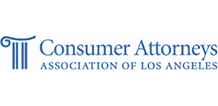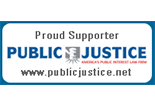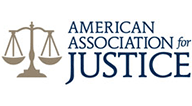The frequency of amusement park and carnival ride accidents reported on the news is alarming. The most recent was the tragic death of a young man on the Fireball ride in Ohio who was thrown into the air and landing on the pavement fifty feet away. Seven others were injured in that accident.
In June of this year, a girl fell 25 feet from a gondola ride in New York’s Great Adventure. In May, a 10 year old was tossed of a giant waterslide in a brand new California water park. Fortunately neither of them was seriously injured.
Sadly, others have not been so lucky. Caleb Schwab, a ten year old, was decapitated while riding the world’s tallest waterslide in Kansas City. This tragedy occurred only three days after three children were injured in a Tennessee county fair when the Ferris wheel car they were riding in flipped in mid-air. A few days later a child fell from a roller coaster in Pennsylvania.
How Frequent are Amusement Park and Carnival Ride Accidents
On an average 12 kids are treated everyday in emergency rooms across the country for amusement park ride related injuries, according to hospital data gathered in a 2013 study. A similar study the same year by the Nationwide Children’s Hospital in Columbus Ohio placed that number at 20 amusement ride injuries per day nationwide. It should also be noted that many park injuries go unreported.
Kathy Fackler, founder of amusement park safety group Safepark, explained to Time Living the relative safety of mechanical rides: “Safe is an absolute, so I don’t use that word. Amusement rides can be used safely, but risk still exists. It depends on the ride, and the riders and can change from day to day. Given that millions of riders are exposed every year, it’s predicable that there will be some accidents.”
What are the Causes of Amusement Park and Carnival Ride Accident’s
One of the main causes of accidents is rider disobedience of safety regulations. However, there are many areas of negligence that can lead to serious injury including:
· Mechanical failure – In the case of the man thrown to his death from the Fireball ride in Ohio the cause was found to be a corroded part
· Improper assembly or operation – Assembly crews and operators in traveling carnivals and fairs are often improperly trained or are in a hurry to set up equipment on a tight schedule. Although inspections are required in California as well as other states, these inspections may not be as thorough as required. The Fireball ride in Ohio was inspected and passed just before tragedy struck
· Tripping and falling – cables and equipment strewn about can be a hazard to both riders and the operator.
· Electric shock – This type of accident is most prevalent in water rides.
· Careless behavior on the part of the operator – This would include alcohol and/or drug use.
· Missing or malfunctioning safety restraints
· Inadequate or missing warning signs
Negligence on the part of employees, contracted workers and the amusement company are always a possibility, however injuries may be attributed to manufacturing errors, or the use for inadequate or defective parts.
Negligence or Product Liability?
When a patron of an amusement park purchases a ticket for a ride the chances are great that the ticket will contain at least one or more disclaimers on the back. These disclaimers do not dismiss the liability of the amusement park or carnival. The park as well as the company that owns a carnival may, in fact, be held responsible for the actions of its employees. It is the responsibility of the establishment to provide a safe environment, inspect the rides regularly and ensure that employees are properly trained.
In 2005, the California Supreme Court found that the operator of a roller coaster or similar ride can be treated as “a carrier of persons for reward” within the meaning of the Civil Code Sections 2100 and 2011, requiring the operator to “use the utmost care and diligence” and ensuring that the vehicle is “safe and fit for the purposes to which they are put.” The ruling allowed a family of a loved one, who died from injuries sustained while on a ride at Disneyland, to continue with its suit.
When an injury occurs on an amusement park or carnival ride an attorney with both premise and product liability experience should be retained immediately. This is especially important in the case of a traveling fair or carnival. Rides may be dismantled and moved before they can be thoroughly inspected for defects in assembly or manufacturing.
The attorney also has the challenging job of finding the manufacturer of the ride and the company who is the actual owner of the carnival. A property owner who allows an entertainment business to operate on their land is likely to be exempt from liability under the recreational use statute.
Speak with an Attorney
If you, or someone you care about, were injured on an amusement park or carnival ride, contact Vititoe Law for a free evaluation of your case. There is no charge or obligation. Do not hesitate, as witnesses and evidence in these cases can vanish quickly. Call 818-851-1886







